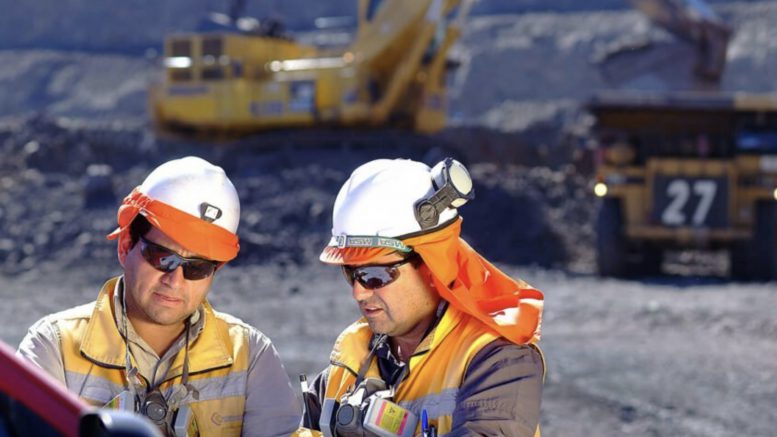Copper extraction is crucial to the energy transition, but a quarter of sites mining the metal face a rising threat from the impacts of climate change by mid-century, according to new data.
The research, conducted by risk intelligence company Verisk Maplecroft in collaboration with mining analytics platform Costmine Intelligence, shows that 19% of copper mines currently have risk exposure to extreme rainfall. That may increase to 25% by 2050, the companies said.
Already, severe downpours over the past decade have forced copper mines in Chile, Peru and Australia to suspend operations causing several billion dollars in losses. Warming temperatures are only expected to increase the pace and intensity of financial hits, the analysts said.
The most likely emissions scenario will harm major copper producing countries such as Canada, Australia and the Democratic Republic of Congo (DRC), according to Verisk Maplecroft’s Extreme Precipitation Index. It measures the frequency and intensity of heavy rains across seven different time horizons and three emissions scenarios.
“Health and safety risks to workers, damaged access roads and electrical and structural damage at site facilities can all have an impact on production,” says Verisk Maplecroft’s Chief Analyst Jimena Blanco. “Associated landslides can also create widespread disruption, both at the site and within the broader jurisdiction, impacting staff, suppliers and members of neighbouring communities.”

Risks to ‘safer’ jurisdictions
The growing impacts of the climate crisis mean that assessing the long-term viability of copper projects increasingly depends on understanding their future exposure to natural hazards, the analysts say.
Canada and Australia account for just under half (47%) of the 718 copper projects benchmarked within the analysis, which focuses on mine sites tagged at advanced exploration stage or further within the Costmine Intelligence platform.
The number of Canadian copper sites facing high or very high risks from extreme precipitation is set to more than double, from 16 projects currently to 42 by mid-century under an intermediate emissions scenario.
Australia, which hosts the second-highest number of potential sites, is set to see a marginal increase, from 27 sites currently to 28 in 2050, leaving 17% of the country’s copper projects at risk.
Countries such as Mexico and the DRC, which comparatively host fewer potential mines – 17 and 11 respectively – would see the share of assets exposed to extreme precipitation rise significantly. The number of Mexican sites rated high risk is set to grow from two in the current climate to seven by 2050. Three of the projects in the DRC face elevated risks of exposure today, but this could grow to nine by mid-century.

Rainfall impacts vary
The impacts of heavy rainfall on mining sites can be significant, from loss of productivity to heightening health and safety risks. They may even create or aggravate risks that compromise relations with local stakeholders, posing a threat to establishing or maintaining a social licence to operate.
These impacts will vary depending on factors like type of mine (open pit vs underground), location, operation size, and transport infrastructure used.
Reconstruction efforts following an extreme precipitation event are costly and time consuming – equipment may be submerged and require extensive repairs, while buildings may also become unsafe. Understanding a site’s present as well as future risk profile helps strengthen emergency preparedness and response plans.
Data-driven decision making
To sustain copper’s pivotal role in the energy transition, stakeholders must adopt comprehensive risk mitigation strategies that consider both current and future climate impacts, ensuring the long-term viability and resilience of copper mining operations, the analysis companies said.
“As we look to the future, the integration of data-driven decision making will be crucial for the sustainability and resilience of the mining industry,” Costmine CEO Mike Sinden said. “A holistic approach to risk management that takes into account future threats to production is a necessity.”


Be the first to comment on "Heavy rains to threaten 25% of world’s copper projects by 2050"